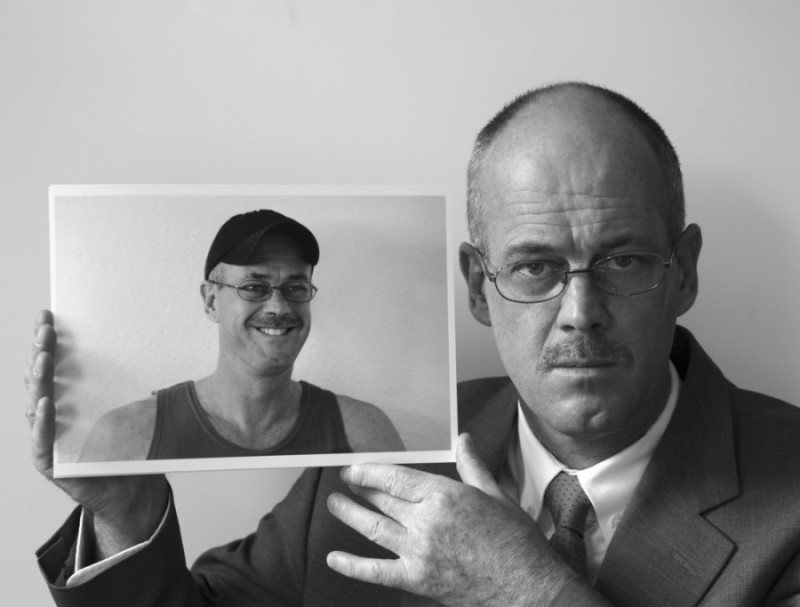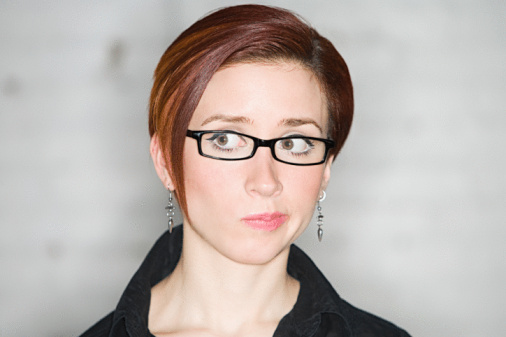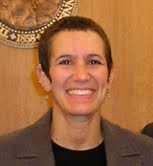
As sign language interpreters, how can we present ourselves to those around us with integrity? Explore the origins of identity and how our identities come into play during interpreting interactions.
“Who are you? Where are you from?” These are seemingly simple questions. However, I find them incredibly complicated to answer, especially in the past the last few years. Part of my complication in answering has to do with where I currently am in my life, both personally and professionally. At the time of writing, I am a 40+ year old American who has been living and working in England for the past 6 years. I am not a CODA, but I have been using ASL for more than half my life and have been RID certified for over 20 years. I now use British Sign language (BSL) on an almost daily basis. The change in context has opened me up to the ideas of the multiple identities we have, how we acquire them, maintain them, and how they can change over time. It is clear that we all have multiple identities (e.g. parent, partner, employee, friend, etc.) and present those that are most salient to the interactions in which we find ourselves. Using myself as an example, I would like to discuss both how we see our own identities as well as how we are seen by the Deaf and hearing people with which we work.
“Through others we become ourselves.”
– Lev S. Vygotsky
Origins of Identity
Not all of our identities come from the same place. From the circumstances of our birth, to the opportunities we encounter and avail ourselves of, there are a variety of ways in which we acquire identities throughout our lives. Generally speaking, we can break down our identities as coming from four possible places, biologically-determined (or pre-dispostional), circumstances of where/when we are born, those that we choose, and those that are given to us by others (whether we want them or not). These categories are separate but there are obvious interactions amongst them (e.g. because of who I am due to my biology may open some choices for me that are closed to others). The chart below gives you some examples in each category:
| Biology |
Birth |
Choice |
From Others |
| Male |
American |
Irish Citizen |
“Foreigner” |
| Caucasian |
Son |
UK Resident |
“Hearing” |
| Blue-eyed |
Brother |
Interpreter |
|
| Near-sighted |
Irish (family heritage) |
Childless |
|
| Red haired |
Catholic |
Gay (culturally) |
|
| Hearing (audiologically) |
|
|
|
Biology
In the first column are those that are more or less biologically determined. In my case, I am a blue-eyed, red-haired, somewhat tall, Caucasian hearing male who is rather near-sighted. While it may be true that environmental factors can play a part (for example, my eye-sight might have a genetic predisposition, but how I use or abuse my sight can also have an effect). Also, in some cultures, certain biological traits may be valued more highly than others (e.g. preference for gender of children, or value placed upon height).
Birth
Because of when, where and to whom I was born (New York City, 1960’s, to a working class, nominally Catholic mostly Irish-American family with 2 children already), I acquired the identities listed in the second column.
One isn’t born one’s self. One is born with a mass of expectations, a mass of
other people’s ideas—and you have to work through it all.
-V. S. Naipaul
Choice
With the foundation of the first two categories, I have been able to acquire other identities, many by choice. (It should be noted that some of these identities may provide me with privilege; the fact that I am a hearing Caucasian male is not trivial. Some of this privilege can allow me to avail myself of opportunities that other may not have access to.) I was born an American Citizen by virtue of the place of my birth; however, I gained Irish citizenship (through a process of paperwork) because of the national origin of my grandparents. Thus as (now) a citizen of the European Union, I can legally reside and work in the United Kingdom. Professionally, I was fortunate to discover ASL and the Deaf Community and train as a sign language interpreter. Personally, I choose to openly and outwardly identify as a Gay man and make many of my choices (who I affiliate with, relationships, where I socialise) based on that identity.
Social Identity is never unilateral.
Individual identity— embodied in selfhood— is not meaningful in isolation
from the social world of other people.
– Jenkins
From Others
Finally, there are some identities that are ‘given’ to me by others. It is clear from my accent (both spoken and signed I am told) that I am not British so I am recognised (and sometimes labelled as) a ‘foreigner’ living in the UK. Also, as I am not Deaf (and I am not a CODA), Deaf people often label me as ‘hearing’ to distinguish me from Deaf signers. Both of these externally gained identities can be seen as either positive or negative (depending on who is labelling me). Also because of the support I received from Deaf friends, I became a sign language interpreter (even though it is in the ‘Choice’ column). My experience living in the UK (where I do less interpreting than when living in the US) is that many Deaf people here perceive me as an ‘interpreter’ because that is a common identity familiar to Deaf people. Even though I may think I have a certain identity (e.g. University Lecturer), external factors are very important in our identity formation and labeling.
Also, I may choose to present anyone of my identities as primary in a given situation. At the eye doctor’s, my near-sightedness is most prominent, at Passport Control in the airport, my Citizenship is the most salient. Thus, I choose to present myself in a way that is appropriate to the situation.
Presentation of Self
In his classic work, the Presentation of Self in Everyday Life (Goffman 1990), Erving Goffman explores the various ways in which we ‘act out’ various identities in the course of our lives. He argues that much of the work we do in social interactions is to avoid embarrassing ourselves and others. Thus, we modify how we present ourselves on a constant basis in relation to others around us. In addition, we can view our multiple identities as nested; we do not ‘lose’ identities, but bring to the front the one(s) most appropriate for the situation we are in (so, in a professional context my identity as ‘friend’ or ‘partner’ may not be relevant to the specific interaction).
How familiar are we with how Deaf and Hearing people present themselves and can and do we accurately convey that in our interpretations? This is stated eloquently by Stephanie Feyne, in Authenticity: The Impact of a Sign Language Interpreter’s Choices:
A simplistic example is of an interpreter who spends all her time in elementary school settings who is then asked to interpret for a job interview at the professional level. That interpreter would have to assess her own skills: Does she know what interviews at this level sound like? Is she comfortable with the jargon of that field in both languages? Does she have the cadence of a professional? What kinds of utterances are typically produced there – short declaratory sentences or longer, denser utterances? Her goals would be to ensure that if the Deaf person presents himself as a genuine and credible professional, that she then renders his message in an accurate and professional manner so that the hearing party sees him as genuine and credible without the interpretation getting in the way.
In addition, it is worth asking ourselves, how do we present ourselves to Deaf people (both in interpreting contexts as well as in social contexts)? How does how we present ourselves to hearing people reflect upon the Deaf people we work with? Stephanie Feyne continues:
… we interpreters, myself included, need to ensure we broaden our range of communication so that it is sufficiently wide to cover all the arenas in which we may find ourselves working. We interpreters must explore our own communicative norms so that when they arise in an interpreted setting we can acknowledge them and elect to disregard them consciously rather than having them control our interpreting decisions.
Personal and Professional Identities
Unlike those in other professions, I feel strongly that for sign language interpreters, there needs to be a close connection between some of our personal and professional identities. If we are not prepared to have personal and professional parts of our lives involved with Deaf people, then we cannot be effective as interpreters. In terms of development of the profession, Lynnette Taylor in Modern Questor: Connecting the Past to the Future of the Field reminds us that:
The role of the interpreter was shaping itself in response to the changing needs of the community. All of us, interpreters, D/deaf people, and even non signers, were engaging in conversations about how to work together, sharing world views, problem solving ethical conflicts, and it was through these conversations and interactions that we began to learn our place in the story. But perhaps more important, these interpreted interactions and witnessing of stories helped us understand the complexities of our community.
Betty Colonomos in, Sign Language Interpreters and the Quest for a Deaf Heart, states:
Interpreters who have no interactions with Deaf people outside of work miss much of the collective history and current burning issues that show up in interpreted interactions and collegial discussions. How can interpreters who hide behind their interpretation of the Code of Professional Conduct–instead of taking responsibility to intervene–employ strategies that are culturally appropriate to solve problems?
It is incumbent upon us as professionals (who, as mentioned before, often have privilege on the basis of identities such as of hearing status, color, gender, and socio-economic status) as well as members of a community that we actively engage with Deaf people and not just in interpreted interactions. We need also to be clear about what identities we hold and how we present ourselves in our daily interactions.
Presenting ourselves with Integrity
So how do we present ourselves in a genuine way to the people we interact with? We are all individuals and those with whom we interact (Deaf and Hearing alike) will expect us to behave in ways that are consistent with who we and how we identify ourselves. One of the issues of the machine model (see for example, (Witter-Merithew 1986), (Baker-Shenk 1991), and (McIntire, Sanderson 1993), among others) was that sign language interpreters were told that they were not allowed to present themselves. This had an alienating effect on all participants, Deaf and hearing alike. While we must be incredibly careful not to “take over” situations, we need to be mindful that how we present ourselves to the participants in an interpreted interaction needs to be genuine, respectful and following the expectations of those participants. Some questions to ponder:
– Are we familiar with the expectations of how people present themselves in the range of situations in which we interpret (for example an office staff meeting vs. a vocational training course vs. a social networking even)?
– Are we familiar with (and do we use) the expected cultural norms of the Deaf and hearing people with whom we interact?
– Are we respectful of the language choices of the Deaf and hearing people we work with?
– Are we familiar with a range of Deaf and hearing people (in terms of age, race, gender, etc.) and how they expect to interact with us in their language(s)?
– Are we comfortable discussing who we are and what to expect when working with us in appropriate ways
– Do we present ourselves differently to Deaf and hearing people that we know and have worked with before as opposed to people are meeting for the first time?
– Does how we present ourselves engender trust?
A Final Point
If we cannot accurately present ourselves with integrity it will not be possible to accurately represent the participants through our interpretations. Integrity starts with each one of us.
References
BAKER-SHENK, C., 1991. The Interpreter: Machine, Advocate, or Ally? J. PLANT-MOELLER, ed. In: Expanding Horizons: Proceedings of The 1991 RID Convention 1991, RID Publications, pp. 120-140.
GOFFMAN, E., 1990. The presentation of self in everyday life. London : Penguin.
JENKINS, R., 1996. Social identity. London: Routledge.
MCINTIRE, M. and SANDERSON, G., 1993. Bye-bye! Bi-bi!: Questions of Empowerment and Role, A Confluence of Diverse Relationships: Proceedings of the Thirteenth National Convention of the Registry of Interpreters for the Deaf 1993, RID Publications, pp. 94-118.
WITTER-MERITHEW, A., 1986. Claiming our destiny. RID Views, October 12.








 Tamar is a student in Gallaudet University’s Ph.D. in Interpretation program (pedagogy/research) as well as an adjunct professor for the Department of Interpretation. Tamar enjoys and values presenting and writing about interpreting to promote growth, development, and respect of the interpreting profession. Tamar has worked as a certified community interpreter, mentor, ER on-call manager & interpreter, VRI & VRS interpreter. She enjoys time with her family, state fairs and sunshine.
Tamar is a student in Gallaudet University’s Ph.D. in Interpretation program (pedagogy/research) as well as an adjunct professor for the Department of Interpretation. Tamar enjoys and values presenting and writing about interpreting to promote growth, development, and respect of the interpreting profession. Tamar has worked as a certified community interpreter, mentor, ER on-call manager & interpreter, VRI & VRS interpreter. She enjoys time with her family, state fairs and sunshine.